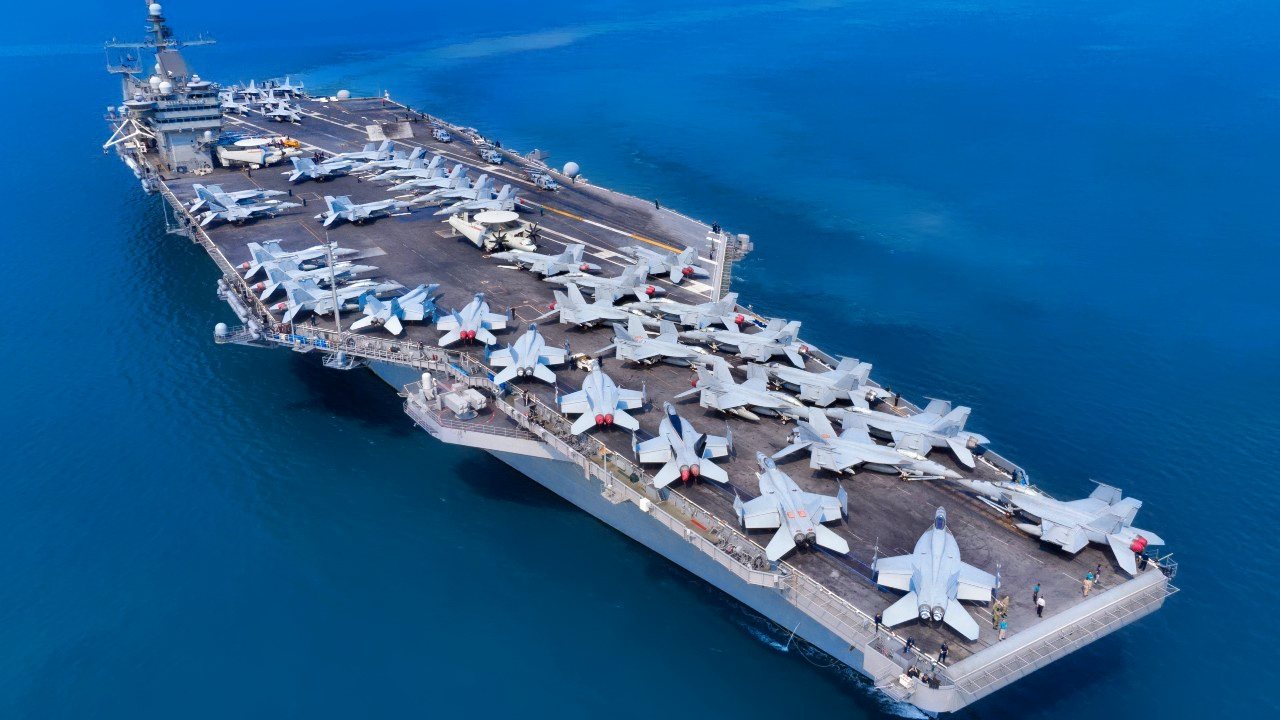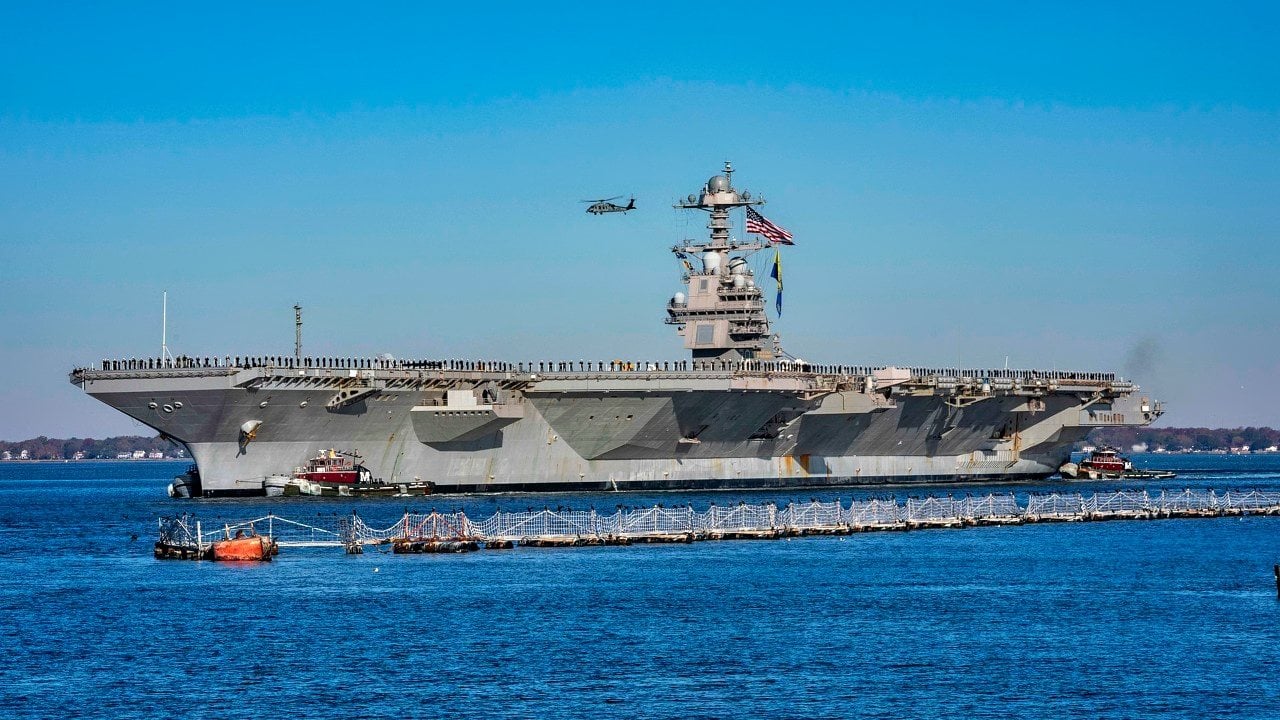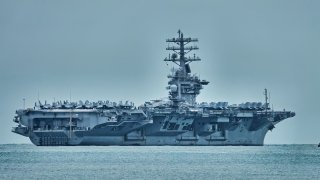DF-26: The Missile That Could Sink a U.S. Navy Aircraft Carrier
China's DF-26 carrier-killer missile can hit targets on land and sea using either a nuclear weapon or a conventional munition. This is a weapon the U.S. Navy specifically is very concerned about.
China's DF-26 Missile Could Someday Sink a Navy Aircraft Carrier in a War: As tensions between Beijing and Washington continue to ramp up, all eyes are on China’s “carrier-killer” missiles.
For many years, Chinese officials have boasted that it possesses major weapons capable of preventing U.S. aircraft carriers from operating close enough to the coastline to launch airframes. The Dong Feng-26 (DF-26), designed by the North Atlantic Treaty Organization (NATO) as CH-SS-18, is an intermediate-range ballistic missile in service with the People’s Liberation Army. Since Beijing only has two carriers in service, compared to the U.S. Navy’s eleven nuclear-powered ships, it is hoping to leverage its DF-26 to level the playing field.
DF-26: The history of the “carrier-killer”
The DF-26 was conceptualized sometime in the 1990s after China had no way to accurately target or hit a U.S. Navy aircraft carrier during the various Taiwan situations that occurred during that time.
According to the Center for Strategic and International Studies, U.S. officials in the 2010s thought it was China’s objective to acquire what they considered were highly accurate conventional IRBMs.
Within a few years, the first images depicting the system’s launcher circulated, and by 2014, U.S. intelligence sources confirmed the missile’s existence.
The DF-26 was publicly unveiled during a military parade in Beijing in 2015. In April 2018, the missile entered service with the PLA’s Rocket Force.
Specs & capabilities:
Chinese state-media outlets claim that the DF-26 can carry out both conventional and nuclear strikes against ground and naval targets. That could mean land targets like U.S. bases in Guam or warships like a Ford-Class aircraft carrier.
The missile reportedly has a range of over 3,100 miles. The two-stage solid-fueled IRBM measured roughly 14m in length with a launch weight of 20,000kg.
As detailed by CSIS, “The DF-26 employs a “modular design,” allowing operators to rapidly swap nuclear and conventional payloads in the field.16 A new model of DF-26 TEL appeared shortly after the DF-26’s 2015 debut with a hinged, separate warhead cover, potentially to facilitate warhead-loading operations. These payloads are typically housed in a finned, biconic maneuvering reentry vehicle (MaRV), similar to the warheads featured on China’s DF-15B, DF-21C/D, and DF-16 missiles.”
DF-26 Tests & deployments:
Analysts speculate that Beijing may have carried out its first operational test of its “carrier-killer” back in 2017. China’s Ministry of National Defense announced that a new missile was tested in the Bohai Sea. However, some experts suggest that the system used could have been a submarine-launched missile and not the DF-26.
In 2020, Beijing launched a DF-26 missile towards the South China Sea after it accused a U.S. U-2 spy plane of entering a no-fly zone in the Bohai Sea. Since 2019, the missile has not been tested against targets at sea.

According to the U.S. Department of Defense’s annual China Military Power Report in 2023, Beijing has at least 500 missile launchers in service, with about 250 capable of being reloaded. While these numbers are concerning, the U.S. Navy does possess layered ship defense technologies that should be able to shoot down or disable incoming missiles.
From the SM-6 and HELIOS lasers to the new Surface Electronic Warfare Improvement Program, it would be very challenging for China to strike an aircraft carrier successfully. However, no one really knows for sure unless tested in combat - something we hope never to see happen.

About the Author: Maya Carlin
Maya Carlin, National Security Writer with The National Interest, is an analyst with the Center for Security Policy and a former Anna Sobol Levy Fellow at IDC Herzliya in Israel. She has by-lines in many publications, including The National Interest, Jerusalem Post, and Times of Israel. You can follow her on Twitter: @MayaCarlin.


